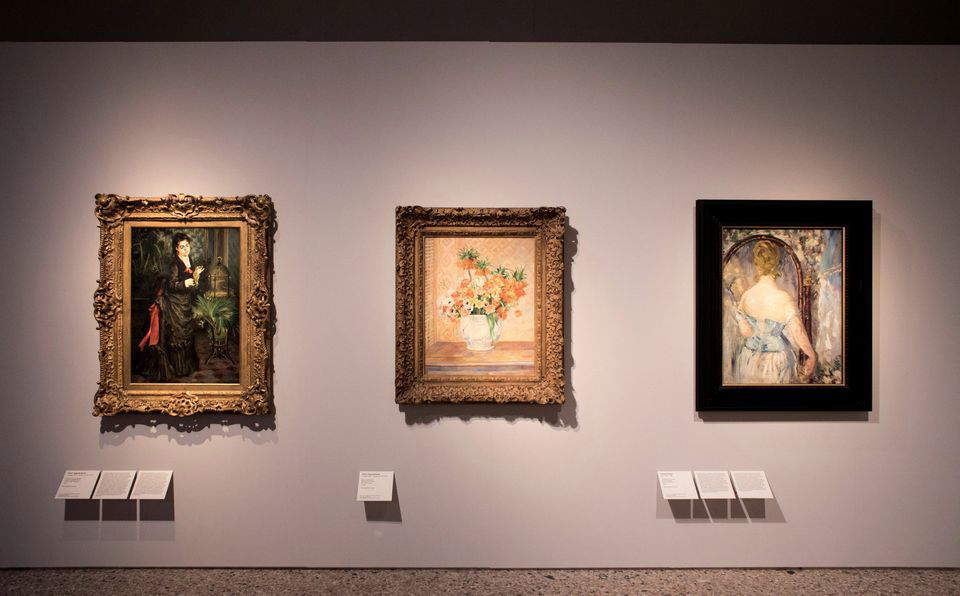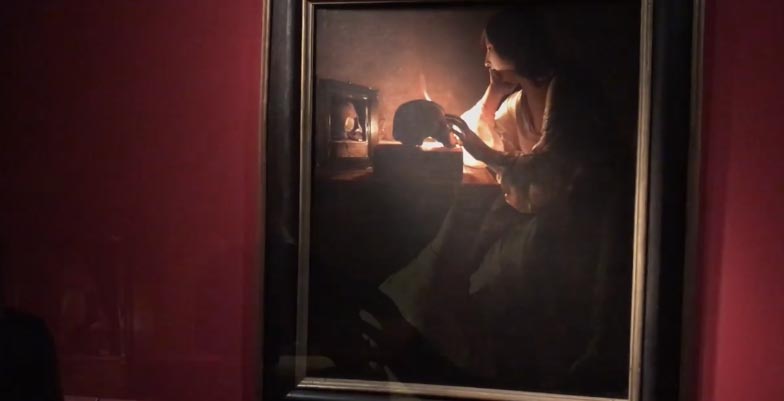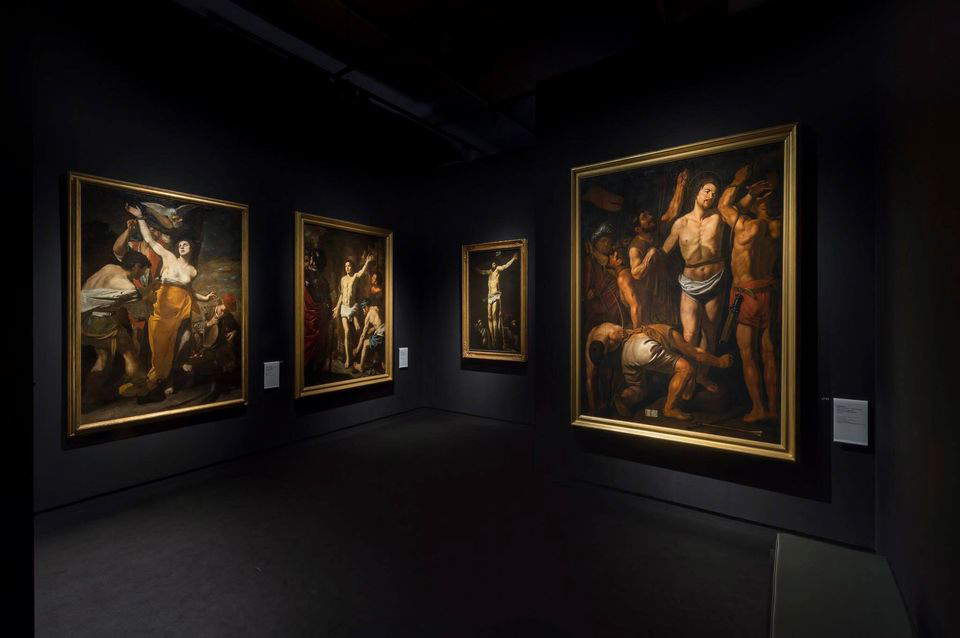The Covid-19 pandemic has radically transformed the world of exhibitions and museums. Anyone who has frequented cultural venues since the May 18 reopening will surely have experienced what it means to visit a museum in the months of the coronavirus: reservations often required, closed numbers (and sometimes even a time limit for stopping in the halls), medical and health prescriptions to be followed scrupulously, an almost total absence of foreign tourists and groups, and decidedly less crowded halls. But the problems are not just about visiting: the Covid-19 has in fact profoundly affected theorganization of exhibitions, and especially major events, especially those based on international collaborations.
Just think of what it might mean to mount an exhibition with loans from different countries, at a time when the health situation in the individual nation can change from one moment to the next: exacerbating contagion can in fact lead to more stringent rules on quarantine (even of objects), with the result that transport times are lengthened, lenders are forced to do without their paintings for longer periods than usual (and often these are masterpieces that attract the general public: in a time of visitor shortages it is therefore difficult for museums to deprive themselves of important works), and the exhibition has to plan everything by anticipating possible hiccups and moving up the schedule (resulting in increased costs). As a result, we will necessarily see profound changes in the coming months: it is likely that for some time we will have to forget about big events, exhibitions with hundreds of works, and will have to get used to more focused and concentrated exhibitions. This is not necessarily a bad thing, of course: the change, in fact, could translate into events that are more locally focused, more respectful of masterpieces and lending museums, free of unhelpful threading of works, more inclined to in-depth and vertical. And the public will also have to adapt to this new reality. Not to mention that there will then be significant changes on working methods.
However, this is a very rapidly changing landscape, and it is not certain that there should not be surprises in the weeks ahead. However, even though the situation is very uncertain, it is still possible to take stock of the situation and try to make some predictions: to do so, we reached out to some of the main players in the exhibition organization industry. So Massimo Vitta Zelman (president of Skira Editore), Federico Silvestri (CEO of 24 Ore Cultura Gruppo 24 Ore), and Chiara Giudice (exhibitions and marketing director of Electa) answered our questions.
The first point to clarify is how the pandemic has directly affected the activities of those who organize exhibitions, especially large events. And in this case the damage has been felt, with exhibitions that have not expressed their full potential (and thus have not guaranteed organizers adequate returns) and with already planned projects having to be postponed. "Limpatto could only be proportional to our group’s leadership in producing major and therefore heavyweight exhibition events,“ Vitta Zelman confirms. ”The exhibition of the Thannhauser Collection from the Guggenheim in New York, to which the public had paid tribute, at the Palazzo Reale in Milan, a great success,“ continues Skira’s president, ”had to close early never to reopen again. The major exhibition dedicated to Georges de La Tour, also staged at the Royal Palace, closed shortly after its opening to reopen in the summer, with quotas and other sanitary measures that dramatically compromised its attendance. Even the event of the year, the great Raphael at the Scuderie del Quirinale, which saw us in the role of publishers and booksellers, achieved results that, while they should be considered exceptional in relation to the restraining measures in place, were still only a third of the potential of this resounding exhibition. As for the projects in the pipeline for the second half of the year, they have all but slipped to the next two years."
 |
| Exhibition hall Guggenheim. The Thannhauser Collection in Milan, Palazzo Reale (Oct. 17, 2019 - March 1, 2020). Ph. Skira |
 |
| Hall of the exhibition La Tour. The Europe of Light, in Milan, Palazzo Reale (until September 27, 2020). Ph. Skira |
Several postponements for 24 Hour Culture exhibitions as well. “For Milan, which is our home and where we partner with the City at Mudec (Museum of Cultures) in a public-private governance,” stresses Managing Director Silvestri, "we agreed from the outset with the Public Administration and the Central Directorate for Culture on the guidelines to be adopted, postponing the opening of the exhibitions Robot. The Human Project and Disney. The Timeless Art of Storytelling. We adhered to the guidelines, putting in place all appropriate sanitation measures, and simultaneously began to think about the best way to reconnect in the meantime, with the museum closed and awaiting reopening, with our public. These were months of great changes in cultural enjoyment internationally, the world of the web and social media during this embargo gave us the opportunity to literally dematerialize cultural offerings for exhibitions, museums, and publishing, allowing us to bring content directly to the homes of our audience, which paradoxically increased ’virtually’ exponentially, with an increase on our social channels of +70 percent in interactions. This is the case, for example, of what we have done at Mudec Museo delle Culture in Milan, with the Mudec Delivery - L’arte a casa tua project born as an offer of new content delivered by the museum on a daily basis, with in-depth insights on permanent collections and exhibitions. For us, digital content has always been a companion path to the exhibition. For the Disney exhibition, for example, we have worked and continue to work constantly on digital content that serves as a teaser for the exhibition and tells the myths, legends, and fairy tales contained in the exhibition, translated into the plates and drawings on display."
Pandemic, in short, has forced companies to inexorably change their working methods. It is on this point that Chiara Giudice insists: “Electa,” she lets us know, "dedicated the first weeks to managing the emergency, to securing, with human resources, the facilities and activities (the exhibitions, bookshops, events) in the museums in which we are partners. Subsequently, this crisis has forced us to rethink models and projects, to find new solutions, to devise new formats, to imagine a future that will inevitably be different, not only in terms of how people visit, but also in terms of the type of exhibitions." And in this sense, exhibitions will no longer be as we knew them. “The mobility of works and people,” Giudice continues, “will change qualitatively and quantitatively for many months, perhaps years. Just think about the question of international loans or the duration of an exhibition, then its sustainability. There will be more selection and maybe even quality.” Electa is also currently in the process of rescheduling: “in Milan we will open on October 9 the exhibition dedicated to Carla Accardi that was scheduled in March at the Museo del Novecento, and in Rome we will inaugurate around mid-October at Villa Caffarelli of the Capitoline Museums the exhibition dedicated to the Torlonia collection initially scheduled for April. Two long-awaited projects that we are happy to finally be able to safely open to the public. We are also looking to forge new agreements with the museums and exhibition organizations we work with.”
 |
| Visitors to the exhibition Giulio Romano. Art and Desire, in Mantua, Palazzo Te (Oct. 6, 2019 - Jan. 6, 2020). Ph. Electa |
 |
| Hall of the exhibition Caravaggio Napoli, in Naples, Museo Nazionale di Capodimonte (April 12-July 14, 2019). Ph. Electa |
Further emphasis should be placed on the fact that, at this juncture, there is still no glimpse of the possibility of a return to normalcy. In this sense, forecasts, Vitta Zelman points out, “are today random, needless to say. Nevertheless, we do not cease to plan and build, with the usual commitment, for a future that is hopefully not too far away.” Chiara Giudice of Electa is of the same opinion: “it is difficult to make forecasts on flows or estimates on trends,” she confirms, and adds, “but we like to think that culture is an essential asset, which must therefore be protected and supported. Exhibitions and museums must play a central role for society and its development, at this time more than ever, not only for the creative aspects, the transmission of knowledge and the educational function (think of the projects that can be put in place with schools, also to solve the issue of distance in the classroom) but also for the stimulus to new visions of the world, to reflection on important and current issues that artists often anticipate or highlight, and to the revitalization that exhibitions, expositions and cultural activities can give to cities of art and to all the induced activities that revolve around them.”
This revitalization, at the moment, comes through the events that were scheduled for the weeks of confinement and have been in large numbers moved to the coming weeks and months. “Like all cultural institutions and companies working in this sector, always comparing ourselves with our international partners,” Silvestri tells us, “we decided to monitor the national situation and work in a network to support each other with international partners. We recalculated many planned projects abroad, imagined different projects and moved all the opening dates. Fortunately, all museums and exhibitions in the world still have to do planning and have a project, so think ahead. No project has been cancelled, a sign of the willingness to revive our sector, adapting to the individual regulations of each state. We have seen that the public has not abandoned us, and many people write to us for news about exhibitions. This is a very strong signal, both of the relationship and loyalty of our visitors and of the fact that the country wants to restart and that culture is a primary need.” Therefore, for 24 Hours Culture there will be a gradual reopening of exhibitions, "assessing the situation of the global pandemic with great care, always adapting to all current regulations. In the coming months the first opening will be about Robot. The Human project (scheduled for Nov. 26) then in early 2021 Disney. The art of timeless storytelling. These two projects have had a gestation of three years and have been very challenging for us in terms of research, production, and investment. They are projects of which we are particularly proud: one dedicated to the world of robotics among automatons of the past, iconic machines of the present, and prototypes for the future, and the other dedicated to the world and creativity of Disney, between traditional drawings and computer graphics, starting from oral and written storytelling and the great works of the past as sources of inspiration for the great animated films we have loved since childhood."
Once the current projects are over, it will therefore be necessary to think about new events, and it is necessary to do so right away.What everyone is now wondering, however, is whether there will still be room for major exhibitions in the future. On this issue, for Vitta Zelman everything is very clear: “there is no doubt that large exhibitions will find their space again, it will be a matter of seeing under what conditions,” he speculates. "In recent years, a producer such as our group has had to assume the totality of the responsibilities, planning and organizational, and, above all, the totality of the business risks associated with the major events in question. And the breakeven of these initiatives was at very high levels of attendance, given the size of the investments and the absence of public contributions. It is clear that the model will not be reproducible until conditions in all respects corresponding to the pre-Covid situation are recreated."
 |
| Visitors to the Impressions of the Orient exhibition at Mudec in Milan (Oct. 1, 2019 - Feb. 2, 2020). Ph. 24 Hours Culture |
 |
| Hall of the exhibition Pre-Raphaelites. Love and Desire in Milan, Palazzo Reale (June 19 - October 6, 2019). Ph. Carlotta Coppo for 24 Hours Culture |
On the issue of public contributions, Chiara Giudice agrees, but she points out that organizational models were already in the process of changing and that in the new phase, public-private collaboration,attention to the community, and valuable projects will count a lot. “The exhibition system in Italy,” points out Electa’s director of exhibitions and marketing, "was already in a phase of transformation. The tastes of national and international audiences and visitors are changing. Public interventions will be crucial for the coming years (from the ministry’s funding of state museums and its fiscal policies, to the choices of civic entities on how to produce in exhibition spaces). The public-private relationship must find a new balance, both in project selection and in economic and contractual arrangements. Sponsors will also play a key role in supporting cultural activities: many companies have long understood that art can be an excellent vehicle for communicating their values, strengthening their relationship with the community and their brand awareness, but also for investing in the community and the territories in which they operate. More than large or small exhibitions, it will be a matter of finding projects that have value: an exhibition does not need hundreds of works to be ’important’ from an art-historical point of view, and even formats with a single work can be interesting, of real added value, as well as successful in terms of the public, if done with intelligence and a real connection with the space and context in which they are conceived."
Finally, the role of the public will continue to remain central: in this sense, Silvestri lets it be known that the exhibitions will continue to follow the target audience. “Our projects in Italy,” he says, “are designed for Italian audiences, so the scale is appropriate to the audiences we aim to welcome and reach. We will modulate the projects by adapting to our potential target audiences, to the historical moment, to the internal guidelines of our Group, and to state, regional and municipal standards and regulations. As 24 Hours Culture we are used to always working internationally and on a global scale, even when we ideate Italian art projects, because we also conceive them in view of a possible second location in a foreign museum. So the focus will be both on what is happening here and what is happening globally. It is a real paradigm shift, and the world of culture also has to engage to make a difference in this epochal change.”
Warning: the translation into English of the original Italian article was created using automatic tools. We undertake to review all articles, but we do not guarantee the total absence of inaccuracies in the translation due to the program. You can find the original by clicking on the ITA button. If you find any mistake,please contact us.